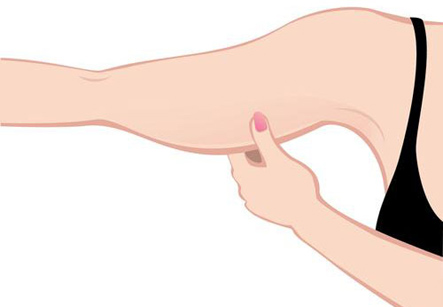Post Bariatric Skin Excess
Introduction
Obesity is a growing epidemic in developed countries throughout the world. Diet can be effective for weight control over a short period of time; however, only about 5% of people maintain long-term weight loss from dieting. As a result of this, a lot of people who are severely obese have turned to bariatric surgery options as a more definitive treatment. The number of bariatric surgical procedures performed is on rise all over the world.
Bariatric surgery for weight loss in obese individuals is becoming a safer and more commonly performed surgery. During weight gain, the skin needs to expand to contain the underlying fat and can often lose elasticity. In older individuals or people whose weight was excessive for many years lose weight, the skin and underlying tissue do not return to their original size in a natural manner. A number of surgical procedures are available nowadays for removing excessive skin and fat.
Surgical Procedure
Surgical techniques for excess skin removal began more than 40 years ago but these techniques had several complications, poor scarring, unnatural contours, long recovery time, and inconsistent results. Over the past 15 years, as the number of people undergoing surgery for removal of excess skin, there have been several improvements in the procedure. One such efficient innovation, known as the body lift, has produced aesthetically pleasing results in selected patients.
The changed contour of the body is apparent in a few weeks

The treatments of excessive tissue can involve extensive surgical procedures. The procedures can vary from commonly performed procedures such as abdominoplasty or tummy tuck, mastopexy or breast lift, inner thigh lifts, and brachioplasty or arm lift to the more complicated procedures such as high lateral tension abdominoplasties and lower body lifts.
Advantages of body lifts include improved skin quality, long-lasting results and smoother natural contours. There are certain disadvantages of the body lifts which include more complex surgery (thus requiring more expertise), longer operating time, larger scars, longer period for recovery after surgery and increased cost.
Many options are available with excess skin removal surgery. Thus, many people choose to meet with a surgeon at least twice or to seek a second opinion before embarking on such procedures. When choosing the timing of these procedures, the fact should be considered that people are at risk for nutritional depletion after massive weight loss. This very important issue must be discussed with a primary-care doctor or bariatric surgeon beforehand. The usual preoperative health check, blood work, arrangement of blood and avoidance of any blood thinners (for example, aspirin, and ibuprofen) are all necessary and desirable for safety and a favorable outcome. Many of the procedures are performed in stages, with several months of recuperation between each stage. Additionally, many procedures require to be performed by team of plastic surgeons with at least two surgeons plus assistants in order to minimize the operative time and reduce risk of complications to the patient.
These procedures are performed with the patient under general anesthesia. The more extensive procedures are often performed in a hospital. Tummy tucks, arm lifts, liposuction, and inner thigh lifts may be performed in a day care surgical setting on an outpatient basis. However, this depends on the extent of the procedure and condition of the patient.
Recovering from extensive surgical procedures can take time. Most people remain in the hospital for 24-48 hours after the surgery. Walking and moving about is important on the day of surgery. Sutures generally dissolve or are removed after a few days. The drains used are usually removed after one to three weeks. Many surgeons advise using compression garments to improve long-term contour. Physical therapy may be necessary for help with return to full activities in this patient population after extensive procedures, especially those involving the arms.
After a high lateral tension abdominoplasty or inner thigh lift, the patient requires a few days until he or she can walk normally. A few weeks period is needed for carrying heavy weights and a few months are required before full or vigorous activity is possible. The changed contour of the body is apparent in a few weeks, but the full result of the surgery in finally giving a new shape to the skin and body is usually visible only after a period of 6 months to 1 year.